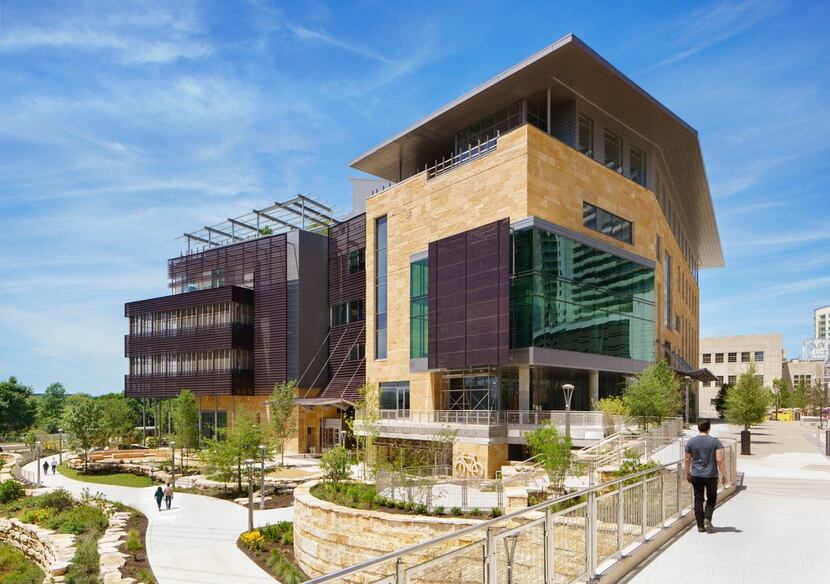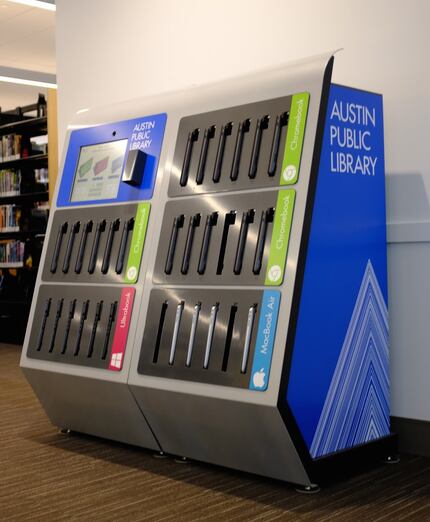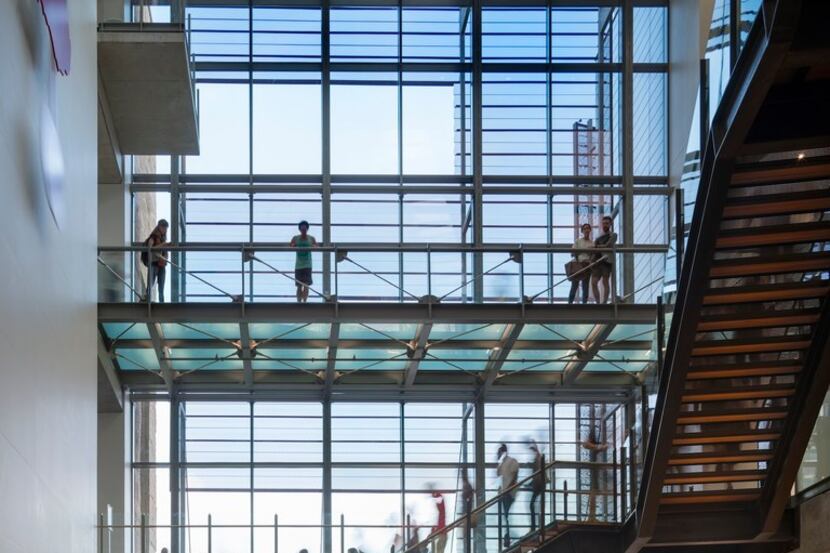Five years ago, at a time when the library was under assault as an obsolete institution in the digital age, writer and critic Zadie Smith argued to the contrary in a widely quoted essay. "What a good library offers cannot be easily found elsewhere: an indoor public space in which you do not have to buy anything in order to stay."
In short order that bit of wisdom has been received, such that providing storage and access to books is now just one element of the library program, and arguably not the principal one. The new Central Library in Austin is a case in point. There are books, to be sure, but it was built to be much more than a place to read them. It is, as well, a co-working place, a conference center, an educational facility, a technology hub, a business incubator, a gallery, a bookstore, a live-music venue and performance space, a café, a butterfly garden, a bicycle repair clinic, and just about anything else Austinites might imagine for it.
The task of defining just what a library in Austin could and should be was fleshed out not in the city itself but some three hours to the west, in Rock Springs. It was there that the architects collaborating on the project, from San Antonio's Lake Flato and Boston's Shepley Bulfinch, held a "rancharette" that established the parameters for their design. "We really wanted to create a new living room for Austin that was part of people's daily routines," says Jonathan Smith, who directed work for Lake Flato. "This is not your traditional warehouse for books."

They also wanted to take advantage of the prime downtown site on Cesar Chavez Boulevard, looking over the Colorado River and Shoal Creek. It is an area reclaimed from heavy industrial use — an electric plant still sits behind the library — and now being developed, or rather overdeveloped, with a series of placeless glass condo towers.
In this context, it is left to the library to keep Austin weird, an effort that it makes in a rather clunky fashion. If your idea of a great public library equates to beaux-arts classicism, with grand entries and clearly articulated reading rooms, Austin's new library will be practically unrecognizable. It is, instead, a hulking machine with a grim bearing, composed of a base of beige stone from Lueders and a superstructure of gray panels of aluminum and perforated screens of anodized metal. It has entries on three sides, and a garage on the fourth, and above them all there are projections and set backs and walls set at cocky angles. To read how it functions from the outside is all but impossible.
Legibility issues aside, it is a good neighbor, with a native landscape that leads down to biking and pedestrian paths along Shoal Creek and the Colorado River. The principal entrance is on the rapidly developing commercial hub that is Second Street rather than the high-speed corridor that is Cesar Chavez.
Inside, the brooding exterior gives way to its visual opposite; a bright well of terrific spatial and visual drama. Its six stories are organized around a central atrium, and these are connected to each other by sky bridges and floating staircases that overlap and cross. Their arrangement seems almost haphazard, as if they were pickup sticks dropped by a giant, but there is method to the madness, the offsets being designed to promote the flow of daylight filtering down from a 128-foot skylight cut into the roof.
The experience of moving through these dynamic spaces is at once energizing and slightly vertiginous, but a sense of anxiety is allayed by protective parapet walls and a material palette of warm blond woods and perky accent colors of red and green. It is as if Piranesi, the 18th century visionary who imagined prisons of darkly fanciful architecture, has been channeled into the language of Texas regionalism.
With so much emphasis placed on the library's spaces of physical circulation, the principal adult reading rooms can seem like after-thoughts. The first, sequestered in a corner of the fourth floor, is an awkward space, and not quite sure what it wants to be. There is a living room setup with chairs and freestanding lamps, and there are linear work tables, but there is little coherence and none of the drama of the atrium. Another reading space, less formal, on the sixth floor, is one of the few dark spaces in the building, with chairs haphazardly scattered.
This is a significant break from the familiar classical design of the library, in which the central reading room was the architectural focal point, a grand space that in its formality insisted on the importance of the library's mission and edified the act of its use.

It is lamentable that we should have to give this up; that it was not possible to uphold that tradition and also have the living areas, co-working spaces, and "punchout lounges" that are scattered throughout this library. It is ironic, or perhaps telling, that some of the most pleasant places to sit are to be found in the stacks, in reading areas surrounded by books.
Children and young adults fare better; for the young, there is a large reading room with red accents and a large enclosed terrace. The teens, who are separated from the young children, get their own bright space.
But the most popular reading area, at least for the adults, will surely be the rooftop garden, where butterflies will flit between native plantings beneath a photovoltaic array that provides 180 kilowatts of energy to the building. Irrigation for that landscape, and water for the library's bathrooms, is provided by a 373,000-gallon cistern salvaged from the site's previous occupant.
The new library cost Austin $90 million, a significant civic investment, but one that has paid immediate dividends in terms of use. Average daily attendance in the new facility is 9,000, a tenfold increase on its predecessor. But the real product of that investment is not so much that attendance, but what it will produce. In this, despite its wonky appearance, it is very much in the spirit of the Carnegie libraries that spread across the nation at the end of the 19th century and the beginning of the 20th. Their goal was not just to edify the mind, but to provide the foundation for industry in all its forms and build an American economy for the modern age.
It is a lesson Dallas would do well to follow. This city's own central library, which opened in 1982, is verging on obsolescence, a dated relic from a generation past. Like its more distinguished neighbor, City Hall, it is an unyielding concrete fortress, but without the sense of internal drama. The city would do well to recall that the man for whom it is named, J. Erik Jonsson, was not just a mayor, but a pioneering technologist, the president of Texas Instruments.
It is hard to imagine he would stand for a library that was anything but state of the art. Providing the city with exemplary educational facilities was an explicit aim of the Goals for Dallas program that was one of Jonsson's principal achievements. At the very least, a city that has pretensions to world-class status needs to keep pace with its somewhat kooky if beloved sibling to the south.
Ironic though it may be, a fine way to honor his legacy would be to replace the building that bears his name.
Mark Lamster is the architecture critic of The Dallas Morning News, a Loeb Fellow at the Harvard Graduate School of Design and a professor at the University of Texas at Arlington School of Architecture.

